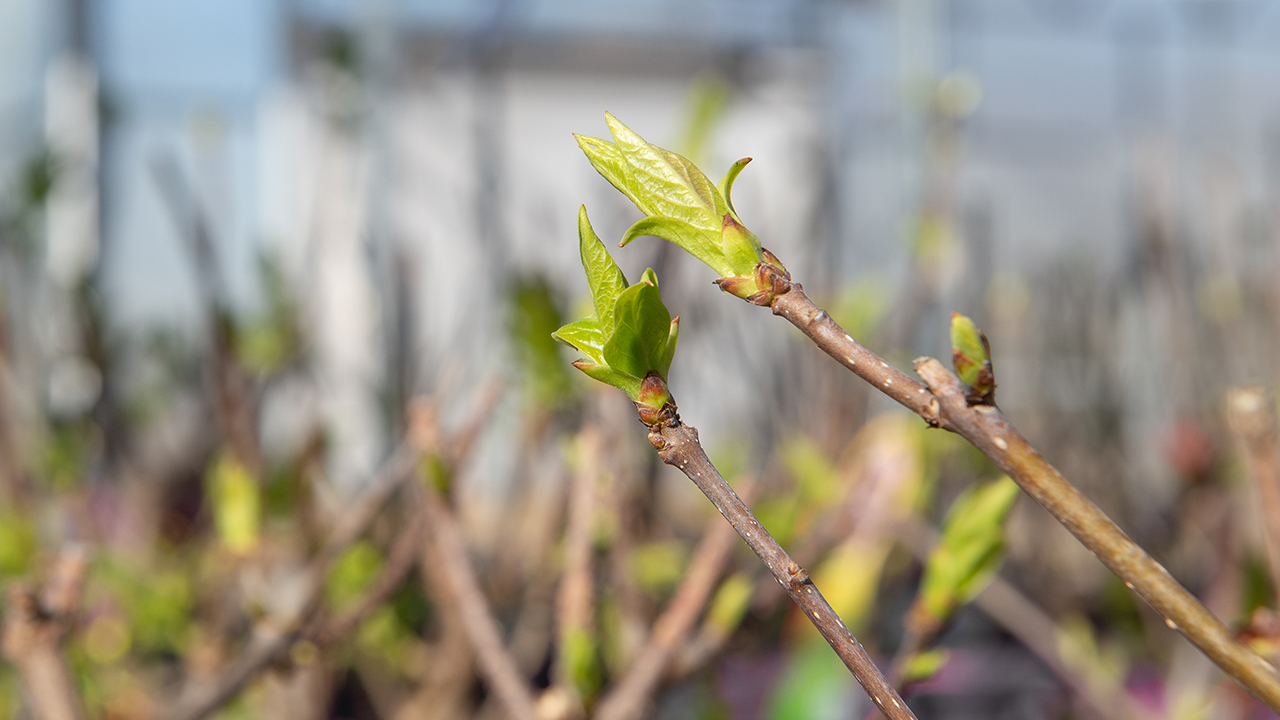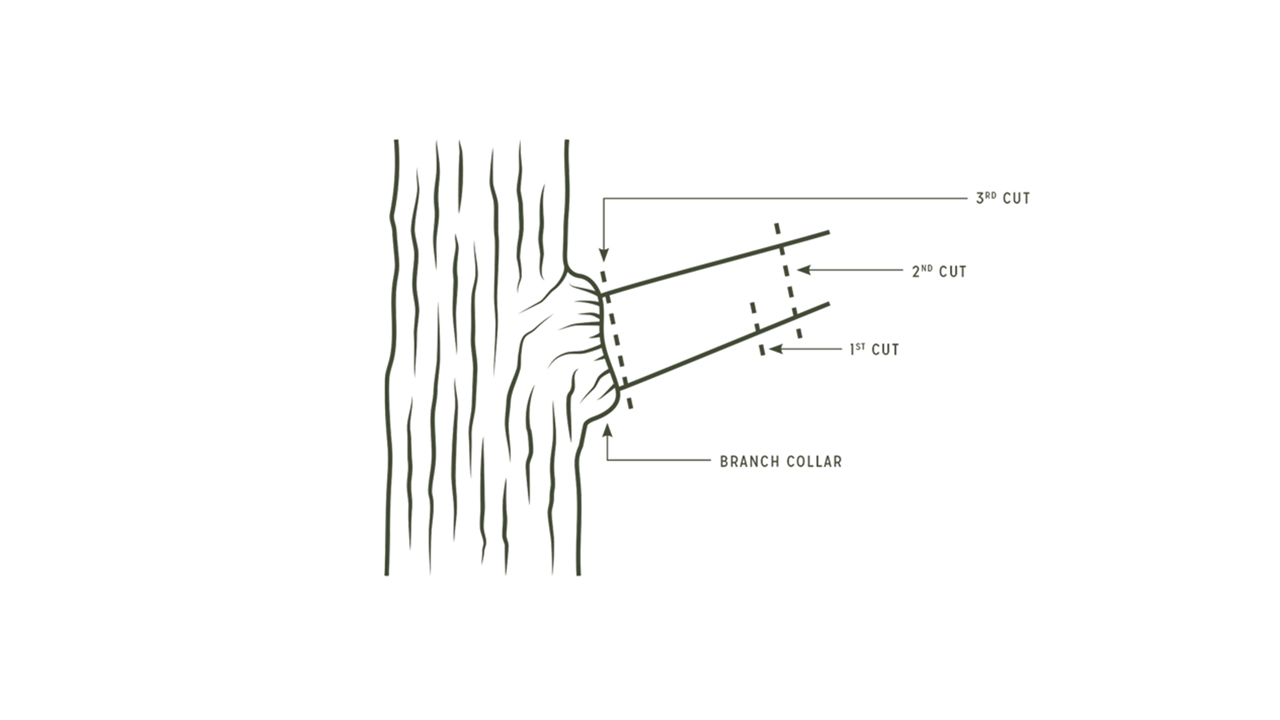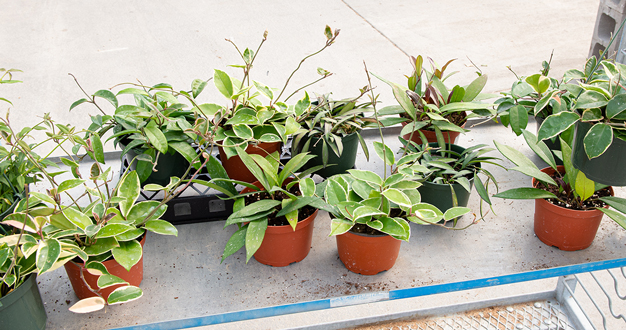
You might be feeling anxious to get outside and start tackling that spring garden to-do list. But before you pull out your pruners or start up the trimmer, be sure to check out our guide to spring pruning. Knowing when to prune, why you’re pruning, and where to cut are all helpful things to consider before you begin.
Pruning with a Purpose
With the right circumstances, pruning trees and shrubs can help support the development of stronger branches, reduce disease, improve branch structure, and create more attractive forms in your landscape. But it’s not always needed. While sometimes approached as a yearly obligation, pruning is really more of a tool to use when it can help achieve a specific goal.
Before you get started, ask yourself why you want to prune in the first place. If you’re not sure, take a step back and consider some reasons why pruning could be helpful. And if none of these make sense for your tree or shrub, it’s ok to skip pruning this year.

Reasons to Consider Pruning
Removing Dead Wood
In this case, pruning is always a good idea and you don’t have to wait for a particular time to do it. Any season is a good season to prune out dead or dying wood.
Thinning a Congested Shrub
Over time, the inside of a shrub can become tightly packed with branches, preventing sunlight and proper air circulation in the interior of the shrub and reducing the amount of interior growth. If thinning a shrub is your goal, be sure to reach down into the shrub to remove portions of the structure when you cut – rather than hedging only the outside foliage.
Rejuvenating a “Tired” Shrub
Some shrubs – lilacs in particular – get woodier and weaker as they age and may stop flowering. To rejuvenate a shrub, we recommend a three-year process. In the first year, take out one third of the oldest branches down to the ground, then cut the rest of the shrub back by one fourth of its height and width. Then repeat this process in the second and third year. Each year, your shrub will produce new growth to replace the branches you cut out, and by the third year, your shrub will be back to blooming as it should.
Managing the Form
Established trees and shrubs benefit from selective pruning that removes problematic branches. This includes removing branches that are broken, rubbing against other branches, crossing back in odd directions, growing downward, creating narrow crotch angles, or competing with the central leader.
Controlling the Size
Ideally, a tree or shrub is planted in a space that can accommodate its growth over time, but sometimes that’s not the case and a little extra pruning is needed. For shrubs, using a hedge trimmer is an easy and efficient way to reduce its size – like giving the plant a buzz cut – but it’s not always the healthiest choice for the plant. Instead, it’s better to reach in and remove long branches at a point deeper within the shrub.

The Best Time to Prune
The growing season – late May through June – is an ideal time to prune many woody trees and shrubs because, with the rapid cell division that’s taking place, the plants are better able to repair their wounds and defend themselves against invading insects and pathogens. Late spring is also a good time to prune heavy sap-producers – like maple, birch, and walnut – to minimize the unsightly mess caused by oozing sap, which flows more heavily during early spring.
But for spring-blooming trees and shrubs that bloom on old wood – like lilacs, rhododendrons, weigela, and forsythia – you’ll want to wait until they’ve finished flowering before pruning. Otherwise, you’ll cut off a good portion of this year’s beautiful show.
Late winter and early spring – March through early May – can be a good time to prune some trees and shrubs too. Summer-blooming shrubs like beautyberry, rose of Sharon, smooth hydrangea, and most roses produce their flowers on each spring’s new growth, so they should be pruned in late winter or early spring before that new growth gets started.

Gathering Your Tools
Depending on the job, there are several tools that can be used. A pruning saw, lopping shears, and small by-pass pruners are commonly used, but a pole pruner also may be needed to reach higher branches on trees. If a job is large enough that you would need to use a chainsaw at a point higher than your head, be safe and hire a professional.
To avoid spreading disease, clean the blades regularly with disinfectant – especially between plants, but sometimes even between cuts on the same plant. And always use sharp tools to create a nice clean cut. Ragged cuts slow the healing process and create easy access for insects and pathogens.


Making the Right Cut
Removing Small Branches
To prune back small stems, use a pair of by-pass pruners or pruning scissors to cut just above a bud and at a slight angle so that water sheds away from the bud. To completely remove small branches, place your by-pass pruner or lopping shears just about as close as you can to the main branch that will remain. Doing it this way uses the width of the pruner blades to create adequate space between the cut and the main branch.
Removing Large Branches
When using a saw to remove larger branches – like those on a tree – you’ll need to be a little more careful. Start with a couple of preliminary cuts to remove some of the pressure caused by the weight of the branch and to avoid stripping the bark when the branch falls. Make your first cut on the underside of the branch, about six inches out from the main trunk – and only halfway through the branch. Then at a point slightly further up the branch, cut downward all the way through the branch.
The final cut to remove the remaining portion should be just above the point called the branch collar. This is the widened area where the branch meets the main trunk, and it’s the spot where a tree can naturally repair the wound when a branch is removed. Cutting into the branch collar will injure the tree, while cutting too far from the branch collar will create a dead stub that encourages insect pests and pathogens.
Questions? We Can Help
Pruning is one of those topics that generates a lot of questions for homeowners. If you’re not sure about how or when or what to prune this spring, just stop by and talk to the team – we’re always happy to help.


